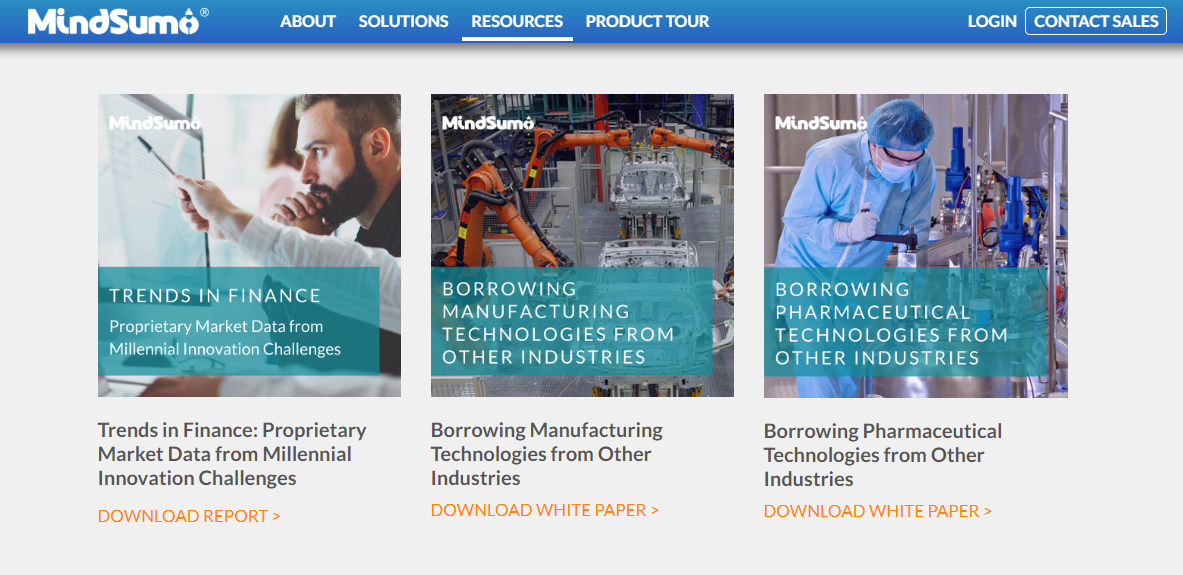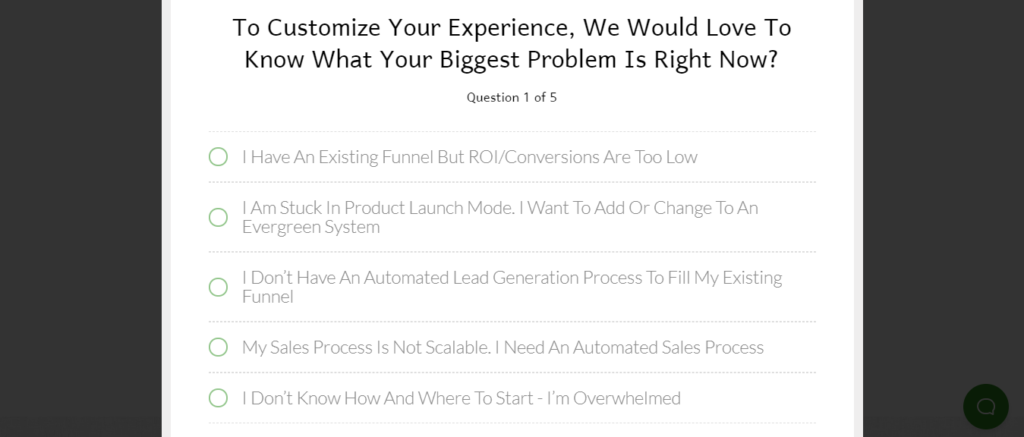4 Ways To Segment Subscribers And Send Better Emails

Email marketing is constantly lauded as one of the highest ROI marketing channels.
It’s better than Facebook.
The returns are higher than Twitter Ads.
In fact, it returns more than 40x what the two platforms generate combined. Even direct mail doesn’t beat it.
There’s one thing those quoted statistics forget to mention. The organizations and individuals that get results understand the nuances of email marketing.
A regular email blast every week won’t get you 40x better results than social media. Before that’ll happen, it’s necessary to segment your email subscribers and send them content that’s relevant to them.
It’s easier said than done. In this post, I’ll look at 4 different ways to segment subscribers so you can send better high-converting emails.

From developing integrations to strategic support, from creating creative concepts to optimizing results.
Why segmentation matters
The best way to illustrate the importance of segmentation is with an example.
Bob is a young professional who’s beenworking in the same company for three years and just got promoted to amanagerial position. He wants to use his increased salary to buy a few suits tolook the part.
He goes into two different stores.
In the first store, a sales rep meets him at the door and tells him about the history of the company and their commitment to quality. When Bob tries to get in a word, the salesman listens, waits for him to finish, then continues his spiel.
Bob doesn’t have a chance to look around onhis own because the salesman keeps presenting different suits. Nothing thesalesman does is rude but he also doesn’t take the time to understand what Bobwants and why. Eventually, Bob leaves the store and tries his luck somewhereelse.
In the second store, Bob walks in and is greeted by a sales rep but isn’t approached. He wanders around the store and sees a few items he likes. The sales rep eventually approaches him and asks a few questions to understand why Bob is looking for a suit.
Bob explains the situation and the replistens attentively. When Bob is done, the rep combines what he was told withobservations he made while Bob was browsing the store. He presents a few suitsand frames their qualities as the answer to Bob’s problem.
Bob is happy buying and the sales rep getsa nice commission. Everyone wins.
It may not be obvious but the sales rep used behavioral and psychographic segmentation to sell suits to Bob.
In order to be successful with email marketing,you should also be segmenting your subscribers. Here are a few ways to do that.
Segment subscribers based what they opted in for
Most websites cover multiple topics or audiences. For example, the MailUp blog has multiple topics which include Email marketing, SMS marketing, Digital strategy, and more.

The people drawn to the blog have different wants and needs. When they subscribe to the blog or download a resource, they’re clearly interested in that specific topic. For example, if they were to download Your Guide to Email Design MailUp would know they’re interested in direct marketing.
With that information, it can segment them so the subscriber receives information related to direct marketing and mobile marketing. When MailUp pitches its solution, it can frame it as the ideal solution for direct mobile marketing.
How is your website categorized?
Do you cater to people with different needs or cover multiple topics?
Does your product have multiple use cases?
Is your customer base made up of many personas?
If so, you can create multiple lead magnets for your customer personas or for different use cases of your product.

MindSumo does this well by creating multiple resources that target different customer personas. When a prospect downloads the lead magnet that’s relevant to them, they’re segmented into the proper email nurturing sequence.
Eventually, they’re pitched a demo of theproduct.
When you’re creating lead magnets, be sureto consider who you’re making it for and how you can use it to segment yoursubscribers.
Survey lead magnets
Segmenting based on how a subscriber joinsyour email list can be an effective method but isn’t perfect. What do you do ifsomeone gets multiple resources or is only slightly curious about the leadmagnet’s topic?
Your segmentation may not be as effective.
What should you do to prevent this fromhappening?
You can simply ask your subscribers what they want within the context of your solution. This simple tactic can produce a goldmine of information and while segmenting them into the perfect group at the same time.
Melyssa Griffin is a blogger and entrepreneur that became popular through Pinterest. On her homepage she offers a lead magnet but requires people to answer a simple question, “What’s your biggest business or blogging challenge right now?”

There are three options and the one theychoose determines the messages she sends and the offers she presents.
Your survey doesn’t have to be long and involved. It simply needs to get enough information to make your segmenting effective.
It’s knowing what to ask that can betricky. How did Melyssa Griffin know those are the biggest challenges her customersexperience?
The answer is a customer discovery survey.
The nuances of that process is beyond the scope of this post (If you’re interested, you can find out more here). Ask as many questions as you want in your customer discovery survey but be sure to include the following one:
What’s your biggest challenge related to x?
X is your niche or focus. For example, what’s your biggest challenge related to email marketing or what’s your biggest challenge related to relationships?
The question is open ended which allows people to pour their hearts out in a good way. The most common answers you get are the major segments in your audience. They’ll also be the answer you’ll present in your survey lead magnet.
The team at Wild Audience does something similar to Melyssa Griffin but they ask five questions instead of one.

Notice that the first question is almostthe same. That’s because this information is important for successful segmenting.
If you’re unable to ask your prospects at the point of lead capture, you can also ask after they’ve joined your mailing list. Make each option a link that can be clicked and add a tag or add them to a specific list based on the link they click.
The end result is a better open rate, increased click through, and more revenue in your business.
Behavioral segmentation
It’s said that actions speak louder thanwords and in many cases that statement is true. Survey lead magnets let you askyour prospects about their preferences.
At times, they may not give the best answerbecause they’re not 100% sure what they want as relates to your solution or theywant multiple things.
Behavioral segmentation helps you unlock even deeper insights. After someone has joined your mailing list, they’ll open specific emails and click on certain links. You may notice that they ignore emails about weight training but love emails about running.
In addition to how they interact with emails, they may visit specific pages on your website multiple times. Together, these make up their behaviors and will allow you to build out a profile of the subscriber.
For example, let’s say you have a websitethat’s focused on software development. You cover a lot of topics suchJavaScript, .Net, MySQL databases, and more. A new subscriber joins yourmailing list by downloading a resource about java script so you segment themaccordingly.
After the initial welcome series, you alsosend them emails for new blog posts. Over time, you realize they’re alsointerested in CSS and MySQL. You can add them to nurturing sequences that coverthose topics and pitch relevant products.
Purchase history
With behavioral segmentation, you’re makinginferences based on a few actions they’ve taken. You may be correct or it maybe a coincidence.
Purchase history gives you concrete evidence that they’re interested in that topic or product category.
There are multiple ways to go aboutsegmenting based on purchase history:
- Total lifetime spend
People who’ve spent more money with you may get a different messages such as an offer to join your loyalty program or a discount. Those who just became customers may get messages encouraging them to come back and buy something else.
- Most recent purchase
If you choose to segment like this, you may send messages that promote other products that are closely tied to the one they just bought. Conversely, you may send informational content that keeps them engaged and using your product. This is also a good opportunity to send review or feedback requests to improve your product or show the world how awesome you are.
- Product category of the purchase
If someone buys a shirt then they’re likely to by another one down the line – right? When you segment based on product category, it means you send messages relevant to the kind of product your customer has shown interest in.
ASOS is a great example of this. I tend to buy shoes and accessories from the online store and it has taken note. Every few days, ASOS will send me a message about one deal or other that highlights the shoes in their inventory.

Because it’s relevant to what I’ve purchased in the past, I tend to buy something at least once a month.
Conclusion
Email marketing segmentation is the difference between campaigns that move the needle in your business and those that fall flat.
When you segment subscribers, you unlockthe true potential of your email marketing strategy. In this post, I’veoutlined a handful of strategies you can use but it’s by no means all of them.
Use one or two as a starting point andtweak the strategies until you find a combination that works best for you.
Let me know how you segment subscribers inthe comments and don’t forget to share.